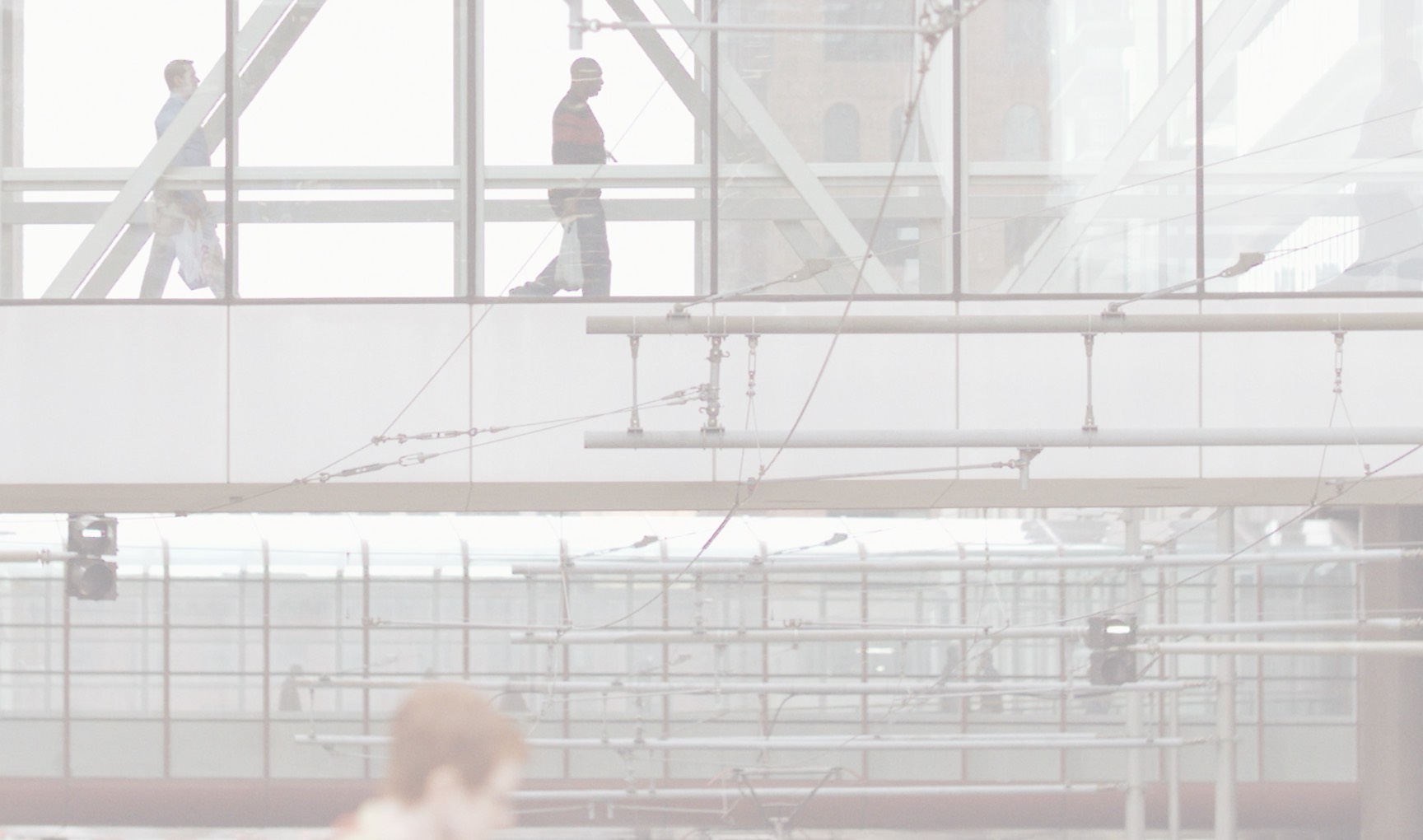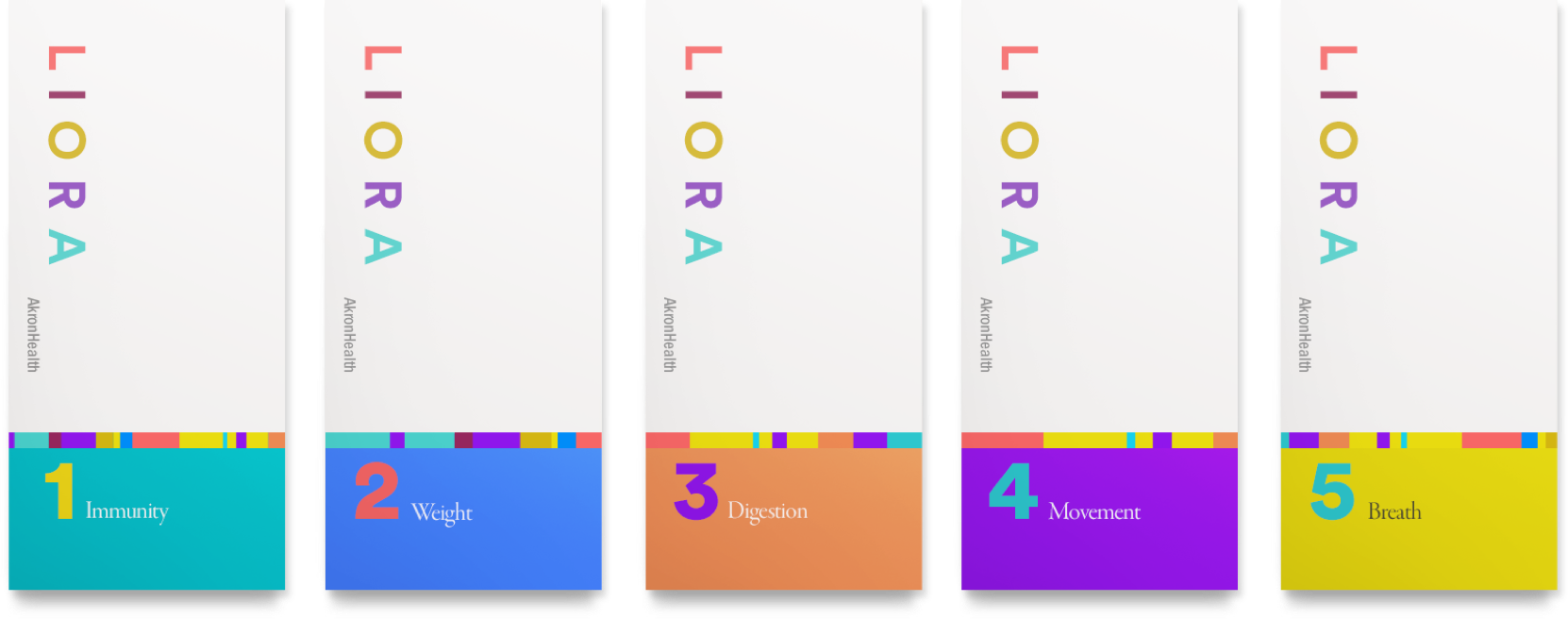Zeus Jones Health

THE END OF DIABETES
For decades experts predicted a wave of new diabetes cases that never materialized. To understand why, we looked at the new world of health, and the way it has quietly reset the clock for millions of Americans.
CHICAGO - A school bus rumbles down a narrow residential street, squeezing between parked cars, its frost-covered windows etched with handprints and proclamations of childhood love. Nora Hernandez waves and turns back toward home, making her way past tidy, if modest, front yards – swathes of arborvitae and neatly trimmed bluegrass glinting in the morning sun. Like so many others, this street is lined with low-slung 1960s ranch houses, the artifacts of a future come and gone.
But for many people today, neighborhoods such as this represent the epicenter of America’s changing relationship with health, and show just how dramatically those changes have occurred over the course of the last decade.
“Growing up around here, we didn’t think about health. You had your annual and that was it,” muses Nora, an affable 42-year-old mother of three. “It seems silly looking back at it; it’s really been a total 180, and I feel like, even in my forties, I’m a healthier and better version of myself than I used to be.” Nora's later-in-life health awakening isn’t unique. In fact, it gives voice to a staggering trend — the near disappearance of what was once a nationwide diabetes epidemic.
Growing up around here, we didn’t think about health. You had your annual and that was it.
Sobering trend lines — redrawn
As far back as the early 2000s, diabetes was seen as an epidemic worthy of the use of any and every tool available to stem the tide of new cases. Soda bans and early-lifestyle based intervention made a modest dent in the growth curve of the disease, but its pace increased as the country’s population aged. By the mid 2010s, nearly 7% of the population had been diagnosed with active diabetes, and an estimated 33% of the population was at high risk for developing the disease. The NIH believed these numbers would continue to grow, so that, eventually, 15% of the population would be managing active diabetes, and nearly half of the US population would be at risk for developing the disease — a sobering reality.
By the mid 2010s, an estimated 33% of the population was at high risk for developing diabetes.
In the end, as we know, these trendlines ultimately flattened, and are now in gradual decline. How could the experts have been so mistaken? It wasn’t just luck. It wasn’t a miracle. What the experts didn’t predict was the scale and scope of change within healthcare that made early intervention efforts sound quaint in retrospect.
Data to the rescue, with a side of healthy habits
The health revolution came in the form of machine learning and behavioral change. It started with tapping into the deepening ocean of data that trickled out of every connected IOT device, wearable, and EHR platform. And what the health care system learned from this data, and how companies and providers used that knowledge, radically transformed not only the trajectory of the diabetes epidemic, but also the way people thought about their health.
“I thought I was pretty healthy. We ate a lot of my grandma’s recipes, that we always cooked from scratch. Thinking about it now, I suppose a lot of those were fried or cooked up in a lot of butter, which explains why I loved them so much as a little girl when we’d visit her house up in Kenosha,” says Nora.
“Nora is like a lot of my clients," says Dan Lory, a Care Coach with Vida, a connected health platform that’s helped millions revolutionize the way they see and manage their health. “They’re not doing anything especially unhealthy, so they don’t really see how these factors can come together to put them at risk for health issues down the road.”
Dan swivels around in his chair to bring up a holograph of health data. “But our platform can see these trends in lifestyle, diet, behavior, and so forth, before any one of us can, and analyze them against everything it knows about every Vida customer.”
Vida
Connecting the dots of your health

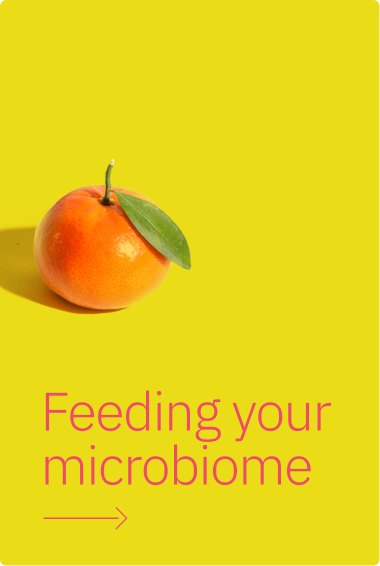
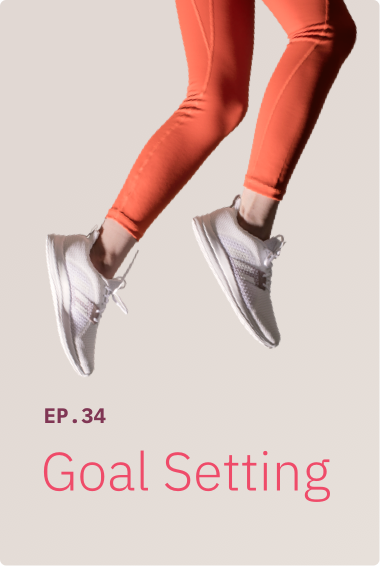

Dan waves his hand and swipes through a constellation of floating data points. “But, of course, the data itself can be pretty abstract, so that’s where I come in."
Vida can see trends in lifestyle and health before anyone else. It’s like the platform can see into the future.
Care Coaches — the human side of connected health
Dan’s a jovial former personal trainer who imparts, at once, both an air of trust and one of no-nonsense high expectations. His job is to be the human face of the platform, and he’s found his niche running his own business as a certified Vida platform expert. He’s one of over twelve thousand “Care Coaches” entrusted with guiding customers through the system — pairing the effortless help of great customer service with the upbeat motivation of a personal coach.
Dan is one of over twelve thousand “Care Coaches” entrusted with guiding customers through the system.
“All that data had flagged Nora as being at risk for developing diabetes,” said Dan. "It’s a little jarring to learn that you’re at risk for a pretty serious disease, so rather than telling you through Alexa, or something like that, we contact each person directly and have a conversation.”
“It’s definitely disappointing at first,” says Nora when she recalls learning that she was at high risk for diabetes, “You’re like, ‘This can’t be right. I’m pretty healthy.’ But, ultimately, it was good to know, and Dan shared the data trends that were causing that alert to be issued in the first place, so it made sense. I’m so glad I synced my HealthPack data and Meditron PointApp – I’m not sure we would have caught this otherwise.”
You’re like, ‘This can’t be right. I’m pretty healthy.’ But, ultimately, it was good to know. Dan shared the data trends that were causing the alert to be issued in the first place, so it made sense.
While Nora’s initial diagnosis provided a general acknowledgement that something might be wrong, she was able to get confirmation by purchasing a diagnostic test and scheduling a specialist visit to get to the bottom of it. These days, it feels commonplace to visit Vida to download a care package, but it’s worth remembering that that hasn’t always been the case.
World-class care, just a click away
The trend of connecting devices, electronic health records, and care delivery interfaces to large health platforms has been central to the evolution of the health care ecosystem. Even as late as 2018, the health care system struggled to transform from a traditional, episodic care paradigm rooted in physical locations into a more dispersed system that relied on distributed care and digital tools. Amazon’s entry into the category — and later acquisition of Vida, along with their population health data — proved to be a tipping point.
It provided the scale and financial heft to begin to realize the vision of a connected future of care, but, of course, any platform is only as valuable as the content and services it facilitates. That’s why it took the better part of a decade for the platform to mature, as other players like Mayo Clinic, Cleveland Clinic, and InterMountain Healthcare ported their programming into the digital space. And now, in the last several years, there has been an explosion of smaller, direct-to-consumer offerings that make the system even more useful and accessible in everyday life. As a whole, this ecosystem has done what wasn’t possible in the earlier part of the century: put health in every place, at all times, and in ways so subtle they’re all but invisible.
The health ecosystem has finally caught up to people. Health care is now everywhere, at all times, and in ways so subtle they’re all but invisible.
First comes a wake-up call. Then a behavior change.
“When I got the tests back, it really scared me,” recalls Nora when she learned that her diagnostics had confirmed that she had prediabetes. “That was when I got serious. I think my kids thought I was crazy when I started throwing away all the cereal in the house,” Nora laughs. "But it really does come down to nutrition and exercise — at least for me. Dan helped me set up a video visit with an autoimmune specialist, and he sort of helped me take a deep breath. We picked a care team that was near here and accredited in Akron Clinic programming, and that made setting up a care program really simple.
Within weeks of her initial diagnosis, Nora changed her eating habits and approach to exercise, spending less time inside and cooking more whole foods from scratch. “Even just a few weeks in I could feel a difference. I had more energy, I felt better. I lost three pounds in a couple weeks without really exercising, just cutting out soda and tortilla chips—the chips have been hard to stay away from, so we just don’t buy them anymore,” muses Nora.
Being really freaked out at first was probably a good thing. It got me motivated to change.
A virtual care team from Liora monitors Nora’s progress and checks in daily, and they’ve become experts in the subtle art of changing habitual behavior. In fact, Nora visits her cognitive behavioral therapist weekly to balance the functional needs of shifting diet and exercise with the emotional challenges that come with a life-changing diagnosis.
Caring for body, and mind
“I realized talking with a therapist was the most important thing to do in person, but I felt like I could handle exercising and eating better virtually. That’s mostly been true — I check in every couple days on Liora Health with my trainer, and my nutritionist on Ono has been invaluable in helping me create a meal plan I can actually stick to."
Food is medicine
Along with her weekly in-person therapy visits, Nora receives balanced meals, personalized with probiotics for her microbiome and with ingredients for her physiology, from Fatma, her Ono nutritionist. Her Liora Health advisor — an affable AI assistant named Alma — checks in weekly as well, with a new personalized workout routine tailored to Nora’s love of running — gradually shifting from base miles in her first few weeks to light interval training to help Nora build muscle mass and increase her metabolism. These programs, like many others in the marketplace, strike a balance between off-the-shelf functionality and personalized tailoring, with the help of both real-life and AI advisors.
“Being really freaked out at first was probably a good thing,” notes Nora. "It got me motivated to change. I know I’m not out of the woods, but I feel so much better about myself, and about the example I’m setting for my kids.”
Ono
Food for the future
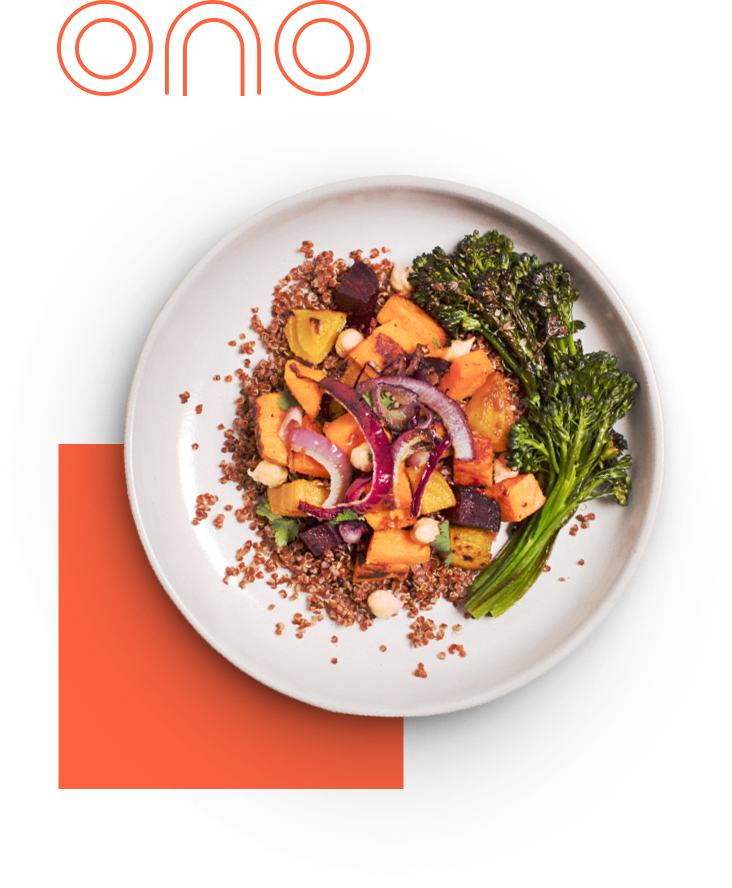 Explore Ono
Explore Ono
Nora receives balanced meals, personalized with probiotics for her microbiome and with ingredients for her physiology, from Fatma, her Ono nutritionist.
Your health — embedded in the everyday
While compelling, Nora’s story isn’t unique. We all have stories of deeply personal insights being sifted from our sea of data—a shimmering ocean of trillions of data points that reflects our hidden worlds. Diseases that were once epidemics have quietly succumbed to these new approaches to care, and variations of this story have played out over and over again. Data-based interventions that only a decade ago felt like science fiction have changed the way we live, and the way we think of health. Health care has become so diffuse, so ingrained, and so pervasive that, despite its vital importance, it’s nearly invisible. It’s an integral, unremarkable part of our everyday world.
Health care has become so diffuse, so ingrained, and so pervasive that, despite its vital importance, it’s nearly invisible. It’s an integral, unremarkable part of our everyday world.
